Decorated revolvers
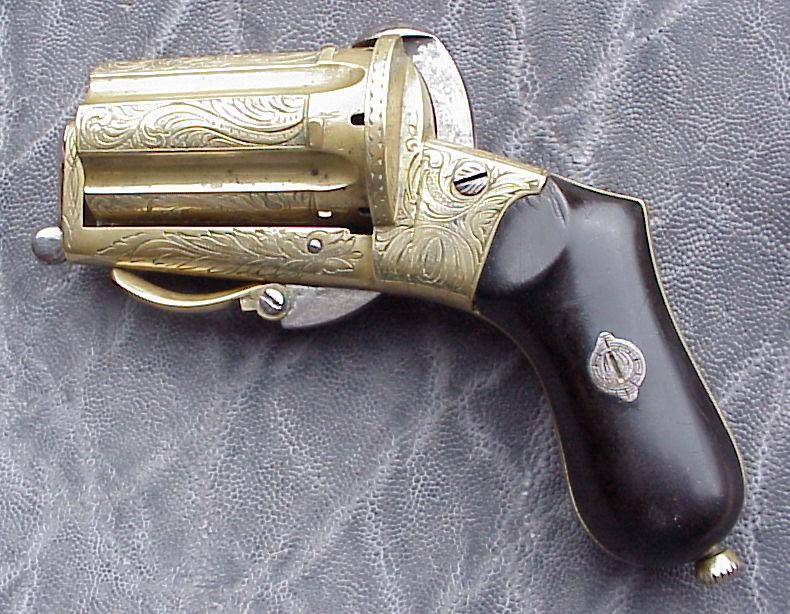
Pepperbox for Derpe pin cartridges by Jean Mathieu, a gunsmith from Vendre (Liège region), who worked fruitfully in the field of arms production. Caliber 7,5 mm, six-shot and, as you can see, richly decorated with carvings
"Chief of the Redskins", O'Henry
stories about weapons. Today our story will be devoted exclusively to weapons decorated with carvings and engravings. We will not delve into ancient times, but again we will start with capsule and hairpin revolvers, that is, from the beginning of the XNUMXth century. Women who read our articles on VO and adore pistols with mother-of-pearl handles will also have something to look at here. Wooden “cheeks” on the handle, in my opinion, are, of course, better, since the hand does not slip on them. But it’s beautiful with mother-of-pearl – there’s nothing to say here. Well, let's start by remembering that all types of carvings, which were used to decorate weapons at the beginning of the XNUMXth century, were tested back in the XNUMXth century and were widely used by gunsmiths to decorate knightly armor and weapons.
First of all, it was metal carving and engraving. These techniques were masterfully mastered by Italian gunsmiths from Milan, Florence and Venice. And then they were even ahead of the German and French masters from Augsburg and Paris. For example, an ornament or “picture” on a weapon was engraved, and the background itself was covered with gold, which gave the weapon an exceptionally elegant look. But gilding items was not only expensive, but also dangerous to health. Indeed, for this purpose, the blacksmith method or “gilding through fire” was used for a long time, when iron products were coated with a paste of gold dissolved in mercury, and then heated over a fire. The mercury evaporated (and the master, no matter how hard he tried, had to breathe with these vapors), and the gold was combined with the iron base. Gilding using foil was used. It was safe, but labor-intensive and expensive. That is why later they began to use the galvanic method of gilding and silvering, which today has replaced all others.
But, of course, the simplest way to finish firearms, and pistols in particular, was bluing. It was carried out on hot charcoal or by burning products in hot ash. In this way, for example, black bluing was obtained, which took root in the finishing of revolvers and pistols, and was used until the middle of the XNUMXth century and later. Blueish and brown bluing was known, with a red tint.
Another common type of weapon decoration, which has also been known for a long time, was engraving, which is in many ways similar to metal carving. There were (and still exist) three types of it: flat, armored and pre-finished with blackening. The first one is the simplest. It was applied in thin lines, not only on metal, but also on bone and even mother-of-pearl.
The essence of armored (or volumetric) engraving was that the master removed the background of the pattern, which then became embossed. It is clear that doing such work on large surfaces was long and difficult, but finishing small parts was convenient - and this is how pistol and rifle locks, and even barrels were very often decorated.
So, already from the end of the XNUMXth century. Armor and weapons are increasingly decorated not with metal carving, which was a labor-intensive and expensive task, but with cheaper etching. Moreover, the pattern made on metal using the etching technique was very similar in appearance to the same engraving. Only the technology here was much more productive, which is why gunsmiths began to use it. The essence of the technology was to apply a heated paste consisting of wax, bitumen and tree resin to the metal surface. Of course, they kept its exact composition and proportions a secret, but in principle the mixture of these ingredients was sufficient. And then the product was immersed in acid (or a mixture of acids), which created an etched groove on its surface. You could additionally go over it with a gravel or etch it once, and then fill it with niello mixed with mineral oil. Then the product was heated, the oil evaporated, and the niello was very firmly connected to the metal. By the way, the technology of silver blackening was very popular in the Caucasus in the XNUMXth–XNUMXth centuries, and even today it is a real national art form here.
At the same time, such finishing with gold and silver as tauching, notching, or inlay was also known. When this technique is used, the steel surface of firearm parts is decorated with gold, silver, brass, and copper.
It itself is very simple, which is why it was used so widely. The master applies the outline of the future design to the product. Then you need to select the metal from the lines of this contour by etching or carving and get the recesses. Etching alone is not enough, and then the design is deepened with a cutter (sticker). The outline drawing was usually made using only carving or engraving without etching. In the case of more complex planar inlay with sheet pieces of metal, etching was first used, followed by finishing with a sharp cutter. By the way, this is why this technique is called notching. Another term, “tausche”, is of German origin: from the word “tauschiren” - “to inlay”. It was brought to Russia by German gunsmiths in the XNUMXth century, and it took root, but the term “notch” was never completely replaced.
By the way, there are two types of notches - flat and embossed. When flat, a wire is placed in the cut groove and driven into it with light blows of a hammer. In this case, the gold or silver wire completely fills the groove. Then the pattern is polished so that the wire does not protrude above the surface. With a relief cut, the convex relief is preserved. In the XNUMXth century, gold notching was applied only to very expensive custom-made custom weapons.
Inlay with gold and silver is also used to decorate wooden parts of weapons, only horn and bone are also added there. But since we are talking about pistols from an era when only the handle linings remained wooden, we don’t need to talk about it in this case, since it is not used. But carving and engraving of bone handle linings is used quite widely.
Well, now let's look at our “gallery of decorated revolvers and pistols.”
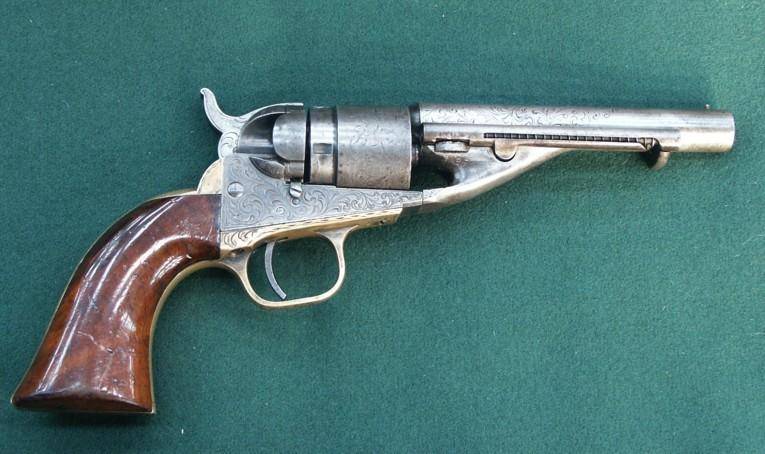
Factory engraving of a Colt Navy revolver. Gorgeous scroll engraving with waves all the way down to the trigger. Luxurious wooden handles. A total of 2000 engraved copies were produced. On engraved copies there is no patent date on the frame, only the inscription "Colt Patent"
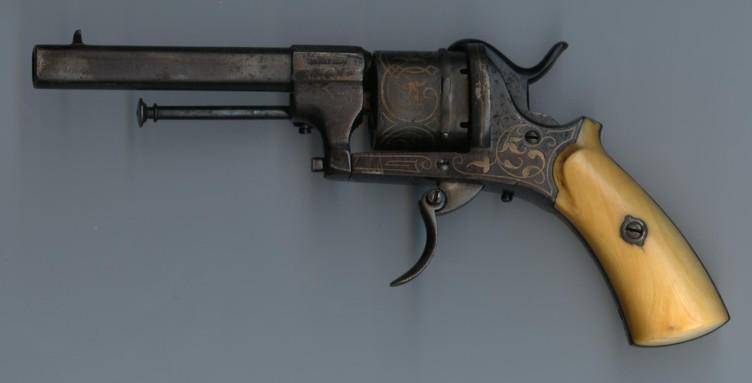
Revolver of the Lefoshe system, chambered for 7-mm caliber pin cartridges, six-shot, double action, round barrel 95 mm long. Ivory handle grips. Manufacturer not identified. However, this revolver is worth a look. It is black blued, and it is decorated with a notch made of copper wire and pieces of copper!
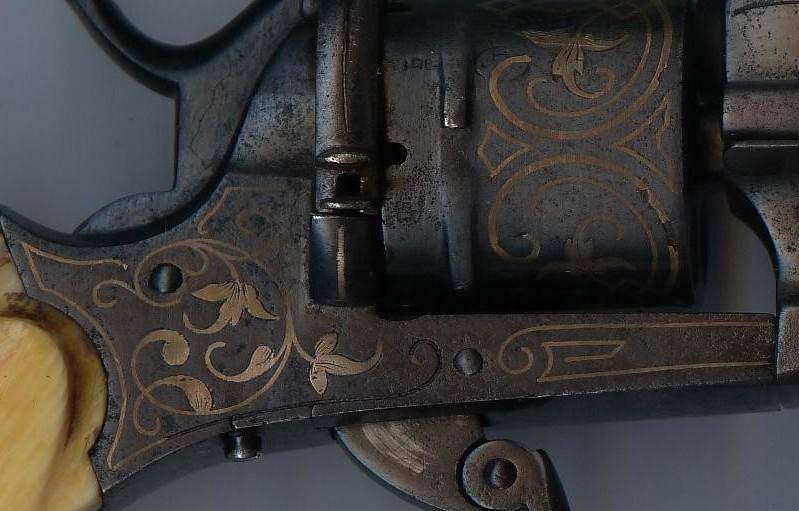
The frame and drum of this revolver are decorated with large checkering
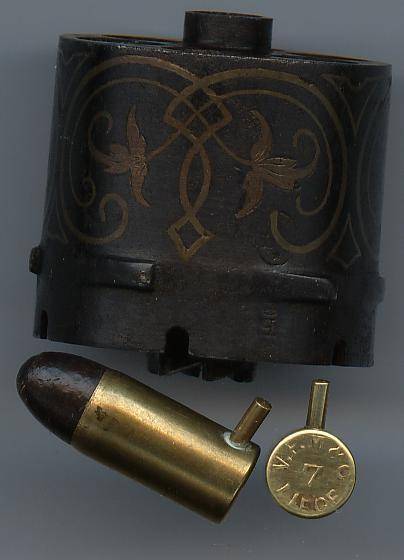
His drum and cartridges for it
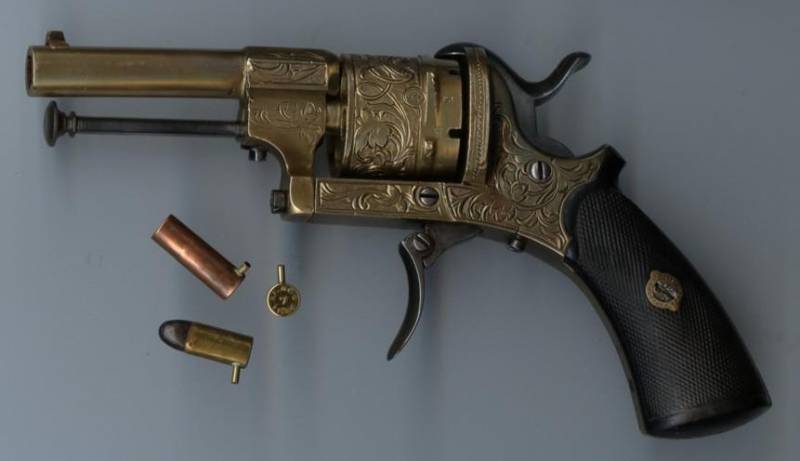
Another revolver of the Lefoshe system and next to it cartridges for it from an unknown manufacturer. Caliber 7 mm, six-shot, double action. Handle grips made of ebony (or ebony). The frame and drum are deeply carved and finished in bronze
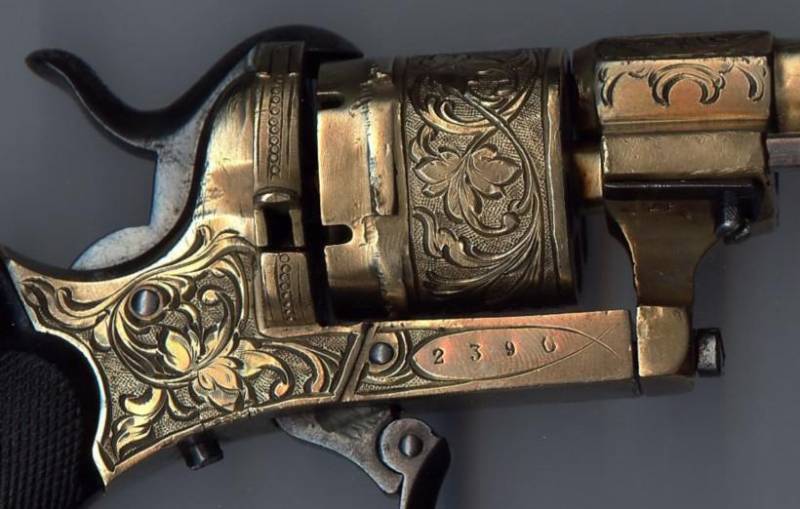
Floral design on frame and drum
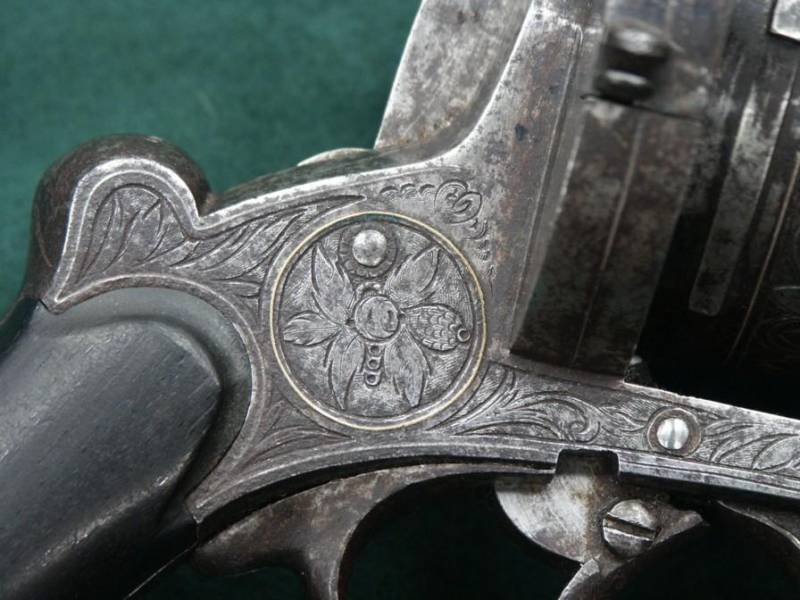
There is also a floral pattern on the monstrous 15-mm caliber revolver with a folding knife under the barrel, which we recently wrote about...
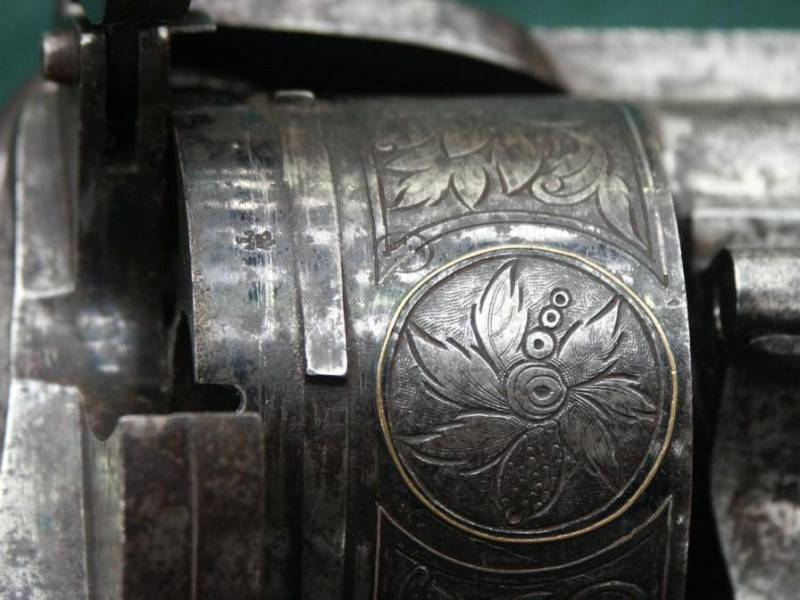
And this is how the drum of this revolver was decorated...
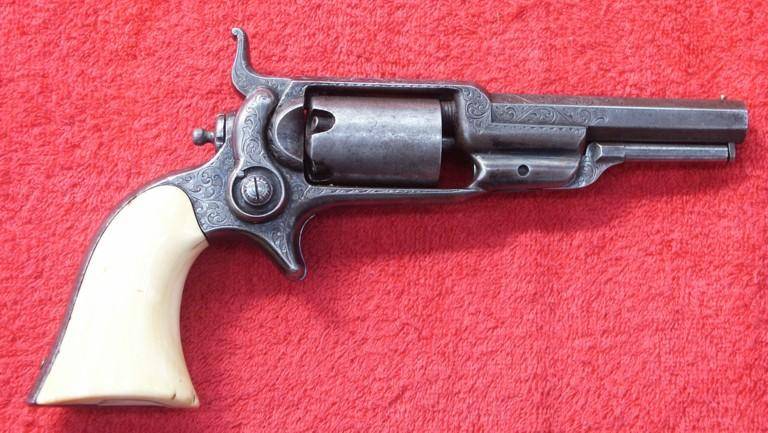
Colt 1855 Navy (or Root Side-Trigger Revolver), .28 caliber (7mm). The revolver is undoubtedly factory engraved. There is an opinion that this is a special order, since there is very little information about it. The name "Colt 1855" is poorly chosen. Colt only received a patent for such a revolver in 1855, and its production began in 1856. But for us the most important thing is its engraving...
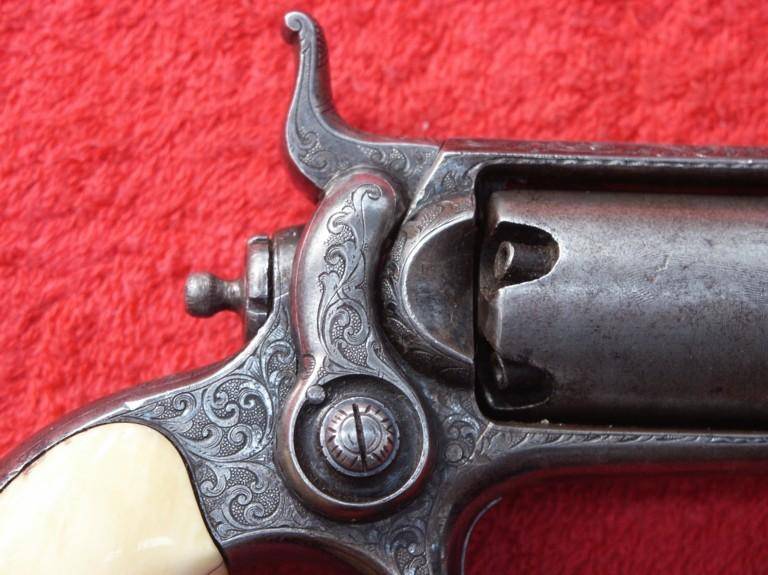
Please note - every detail of the revolver is engraved!
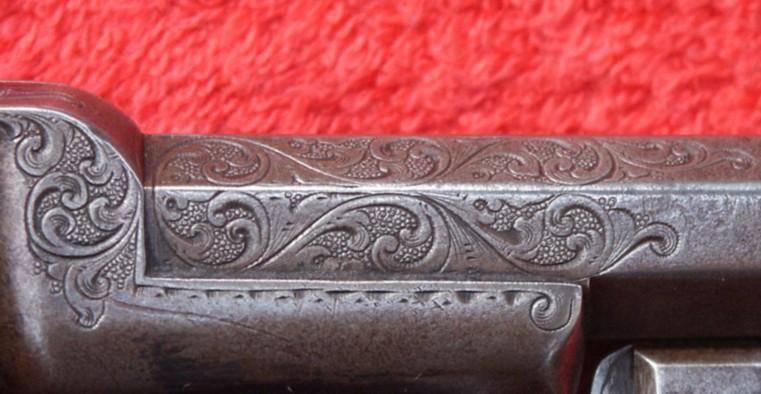
Barrel engraving
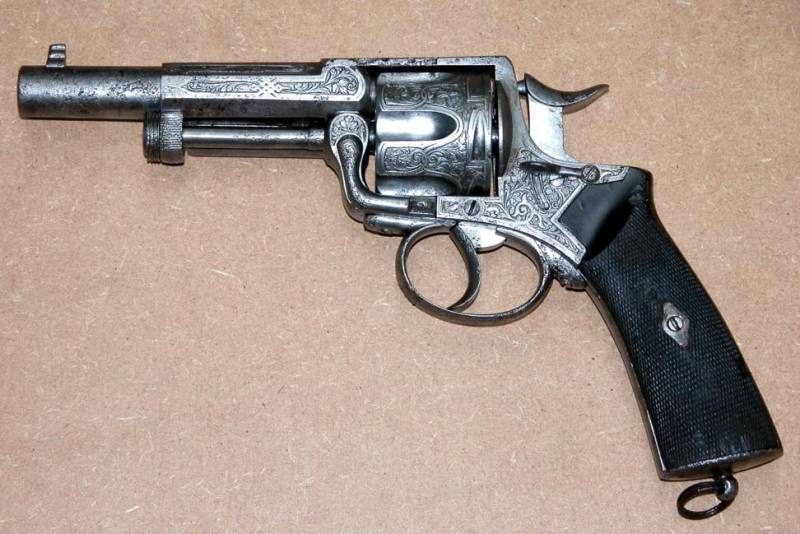
A very beautiful “silver” cartridge revolver from an unknown manufacturer. Similar to Fagnus' revolver, but has a Mauser safety catch. Weight: 995 g. Caliber: .44 Russian (10,6 mm). Barrel length: 120,7 mm. Total length: 255 mm. The revolver has a single and double action mechanism, of excellent quality, all parts are well fitted. Both frame and drum are plated in silver, although this finish has suffered greatly from time to time. As for the number of such revolvers, it could not be large and, most likely, should have been limited to a maximum of a dozen copies
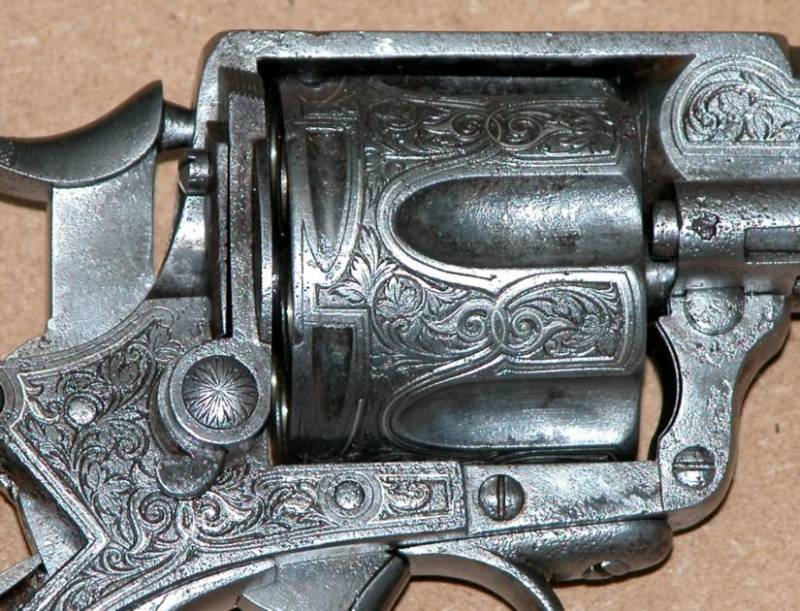
Drum thread
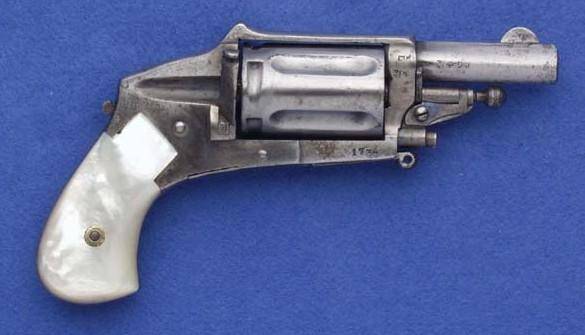
René Galant's 1895 hammerless cyclodog chambered for 6mm caliber and with a mother-of-pearl handle!
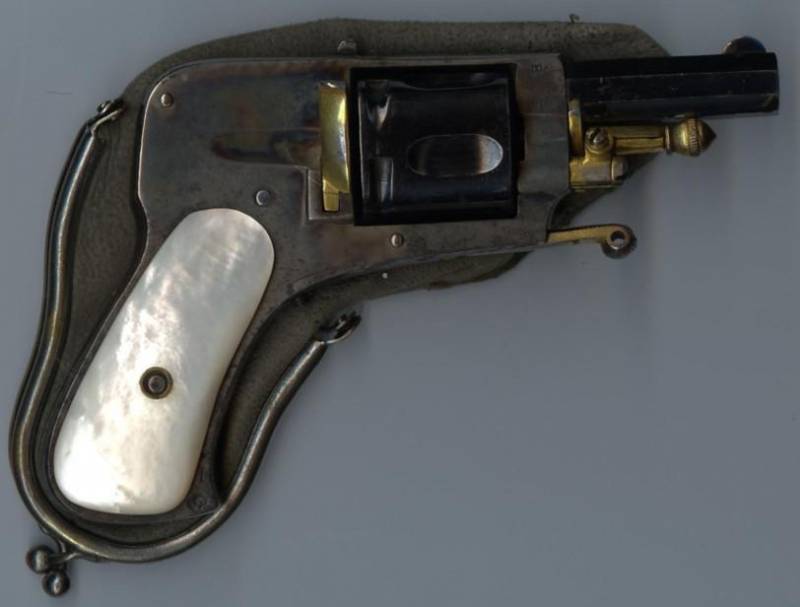
Another hammerless bicycle dog “Pappy” (“Puppy”) with bronze details, 6 mm, 1904.
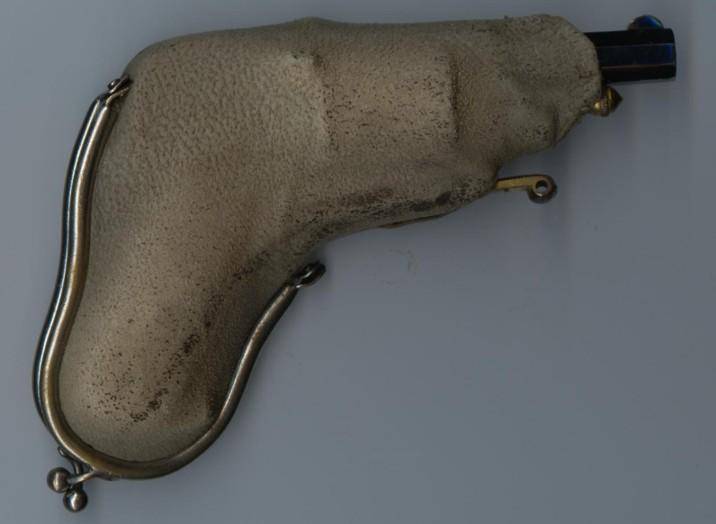
And this is such a “ladies’” holster for him!
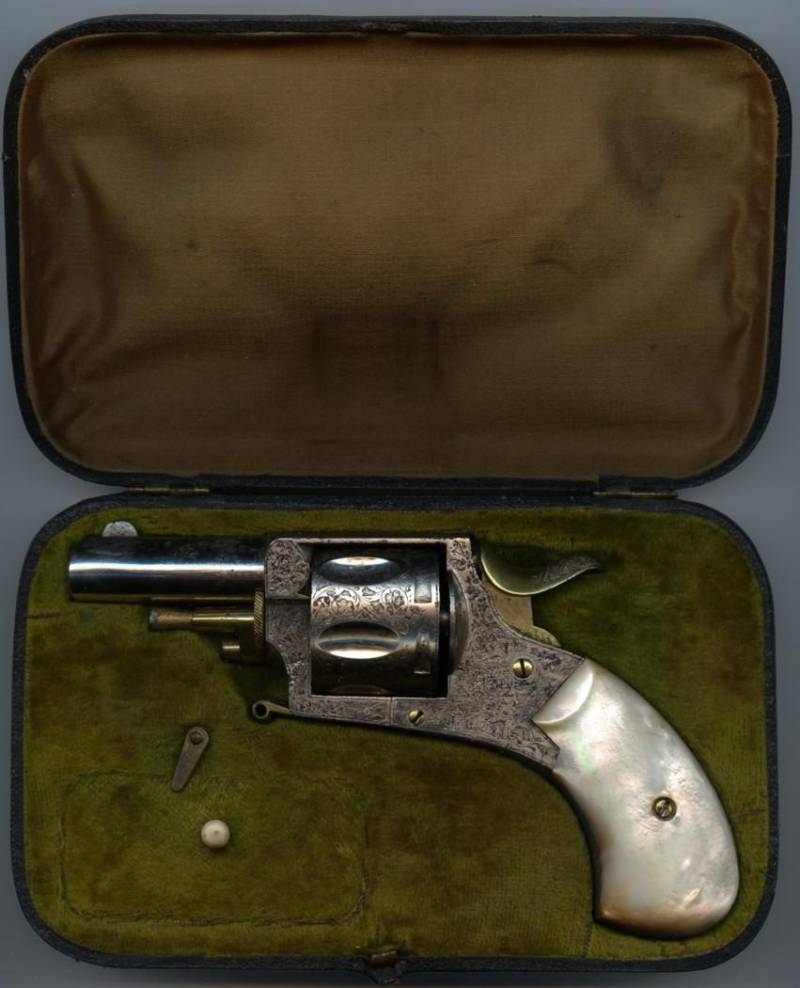
Engraved "pappy" with bulldog type trigger. Caliber .320
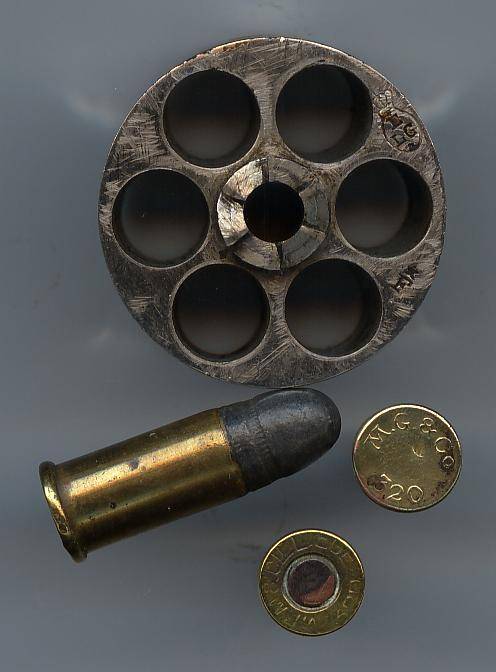
And this is a drum and cartridges for it!
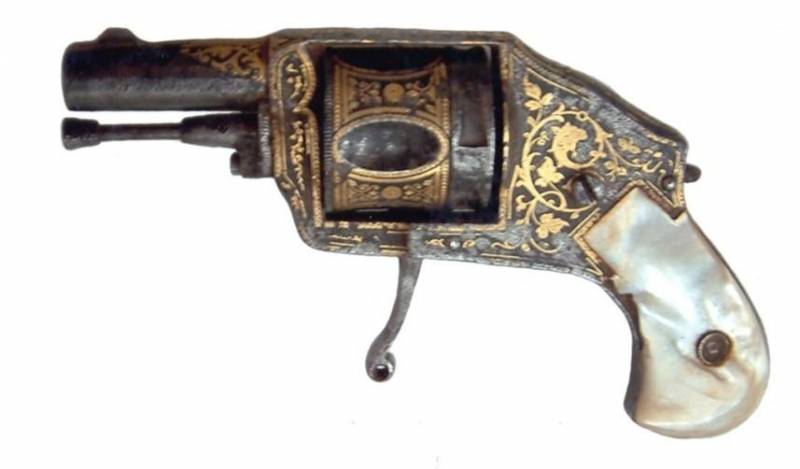
Hammerless “pappy” from an unknown manufacturer with copper knurling and a handle with mother-of-pearl overlays. Truly barbaric splendor!
To be continued ...
PS
The author and administration of the site express gratitude to Alain Dobresse (littlegun.be) for permission to use his photographic materials.
Information